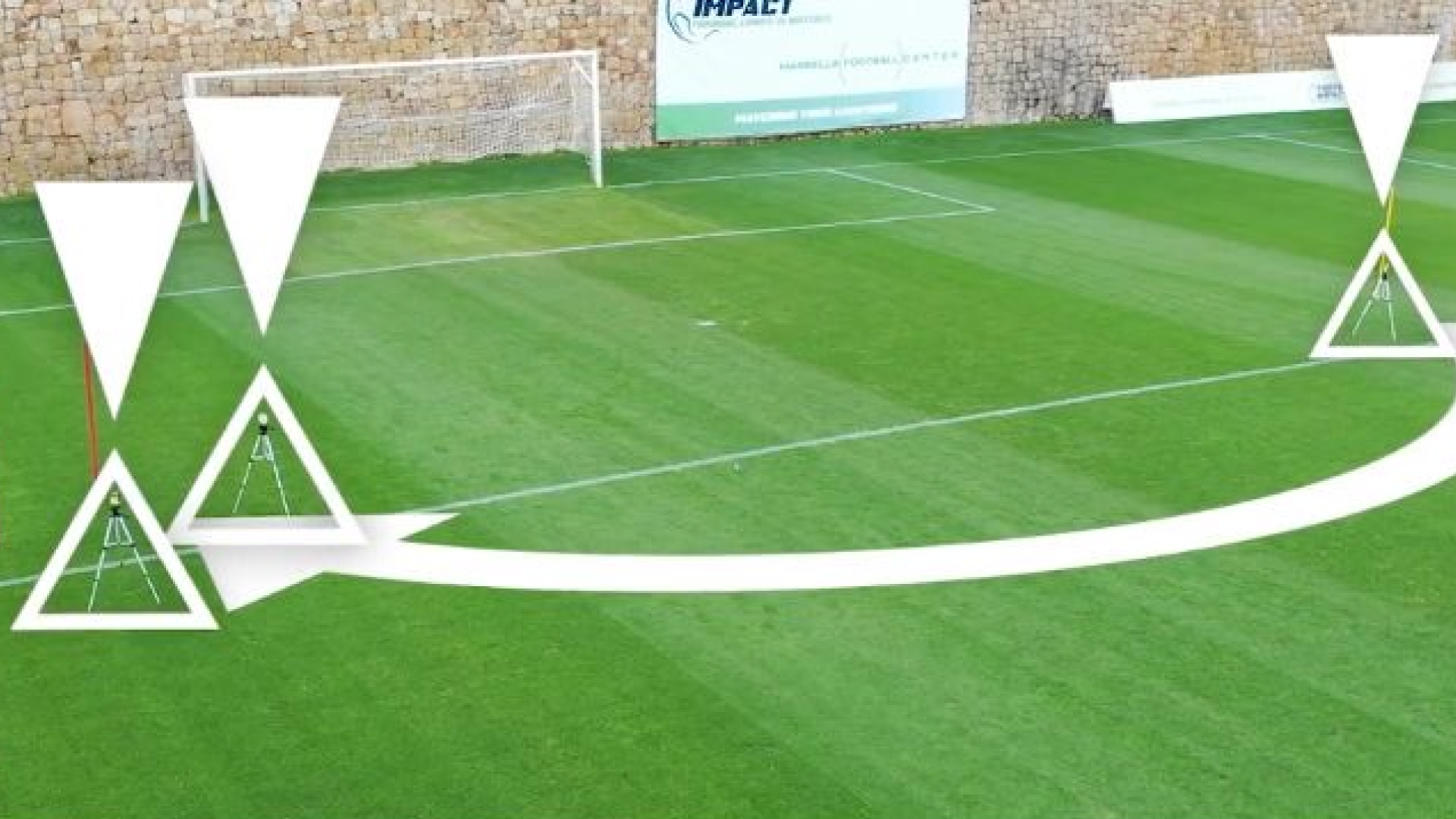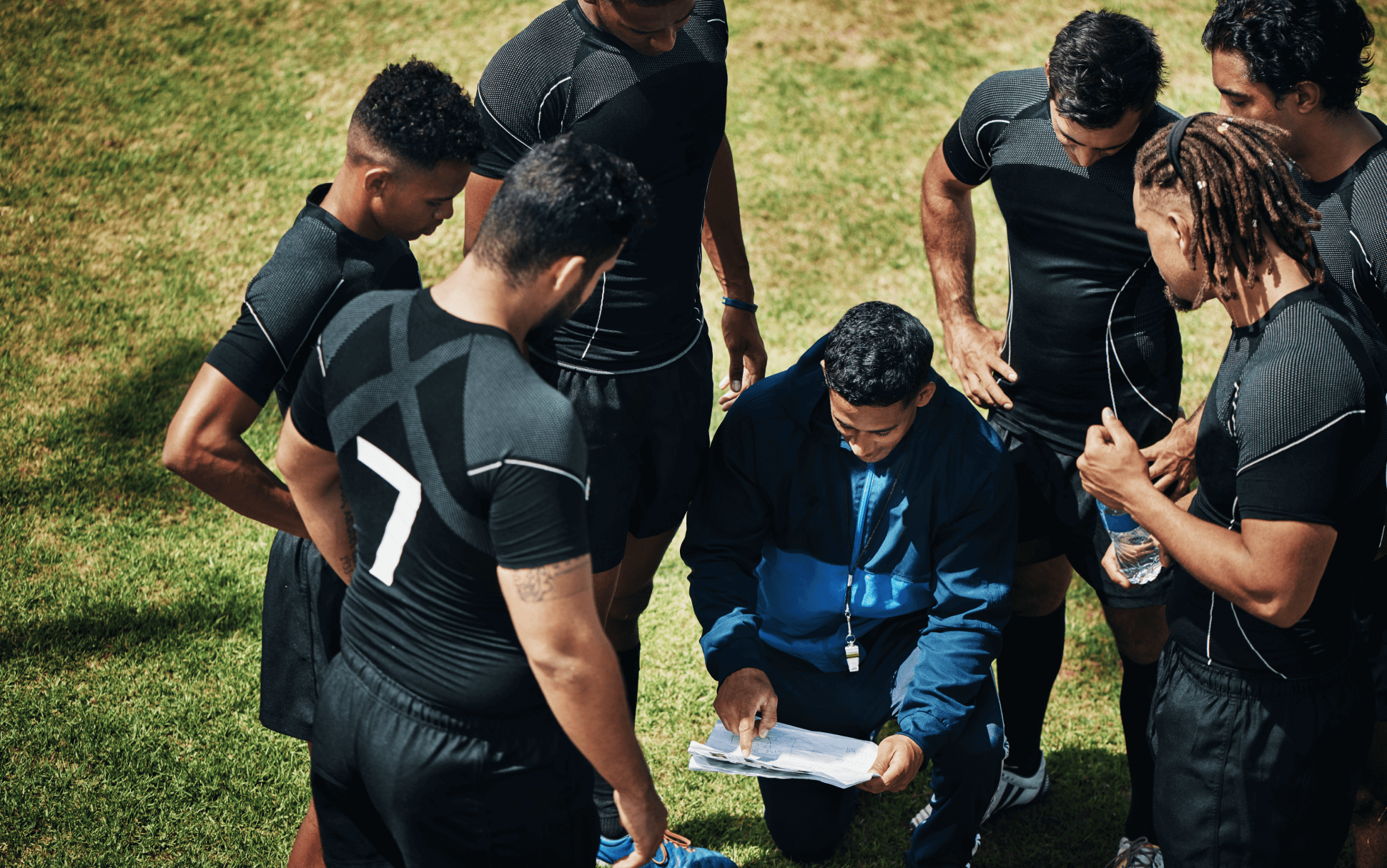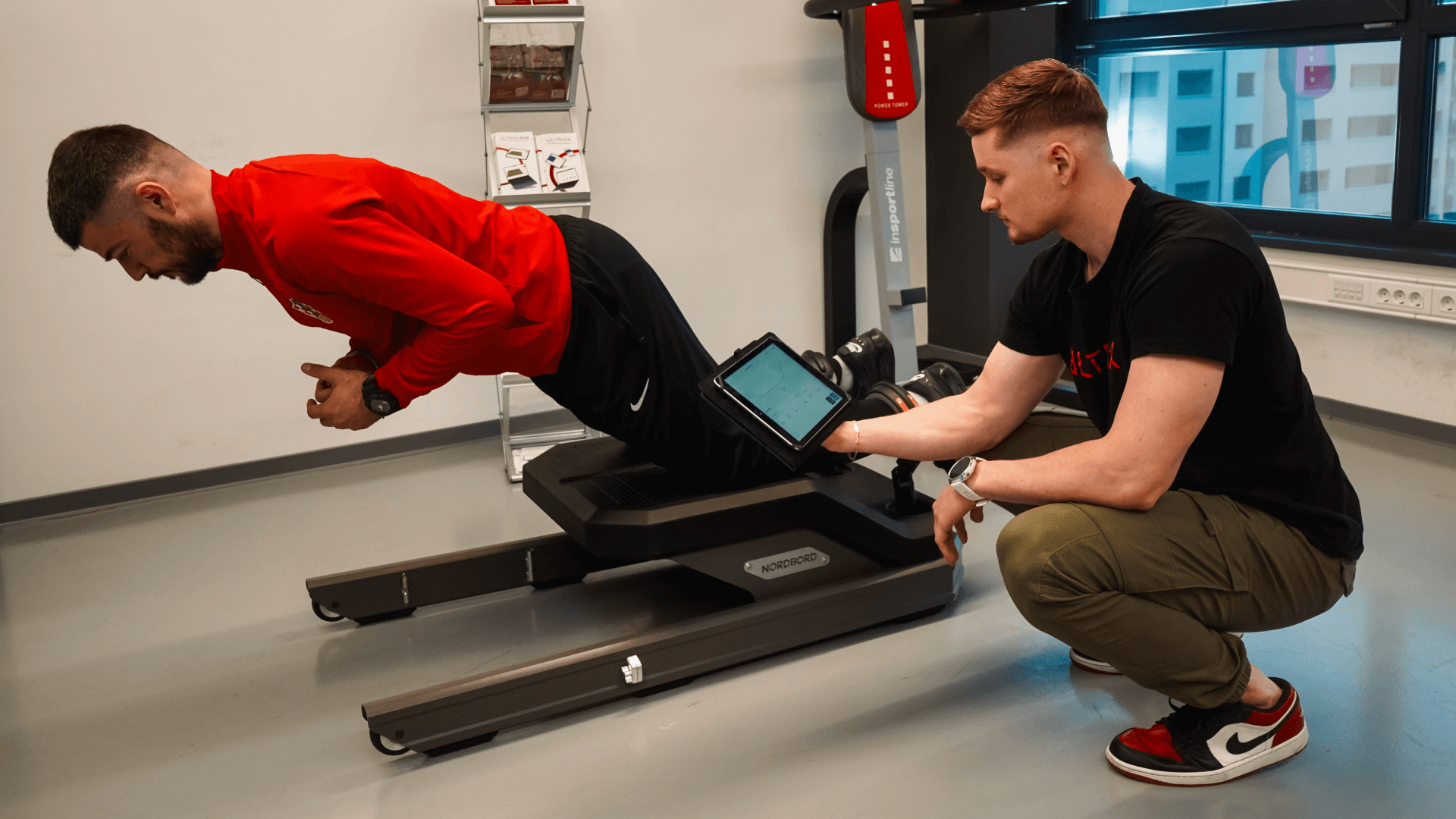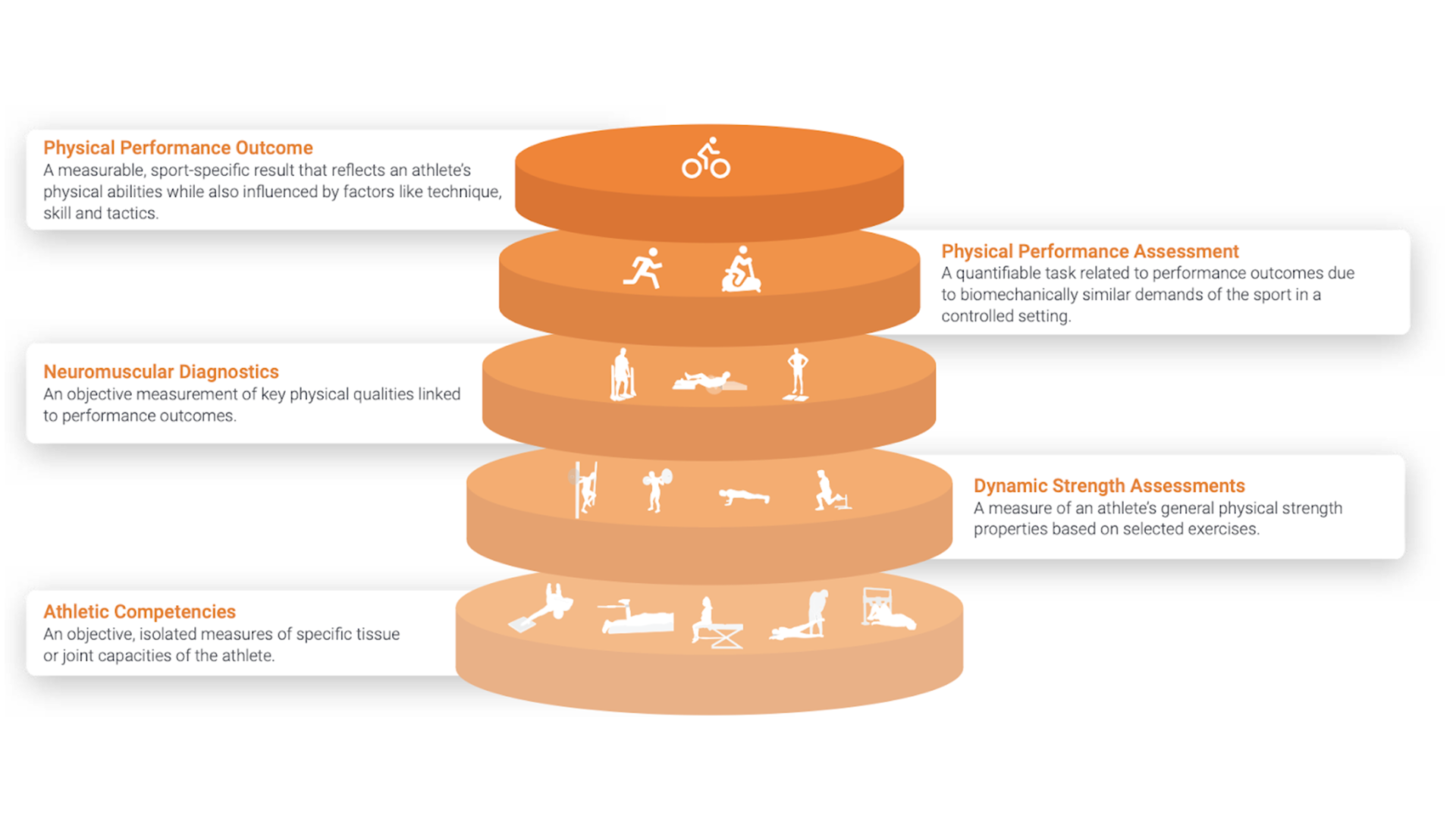Traditional testing and training methods often fail to reflect the specific demands of football movements. Many drills and assessments still lack biomechanical and contextual relevance to the sport. For example, most exercises emphasize linear, single-plane motions, which do not represent the multi-directional and reactive nature of football.
Movement efficiency relies heavily on joint angles and force vectors—factors that dictate how the ankle, knee, and hip contribute to performance (Kotsifaki et al., 2021). Simply put, if athletes consistently train using straight-line movements, their neuromuscular adaptations will improve primarily in those directions. Since athletic performance—especially force production—is highly task-dependent (influenced by joint angle and time to apply force to the ground), this principle extends naturally to other team sports as well.
One reason for the persistence of linear sprint training lies in the limitations of common training equipment. Most resisted sprint tools are designed for straight-line use and involve harnesses or vests that restrict rotational movement. As a result, athletes end up training in robotic, linear patterns—far removed from the curved runs, body rotations, and torso-pelvis dissociation seen in real match scenarios (Caldbeck & Dos’Santos, 2022).
Not All High-Intensity Efforts Are the Same: The Illusion of Similarity in Football Actions
In youth football academies, it’s common to observe strong correlations between different high-intensity physical actions. A player who accelerates quickly is often also among the best at jumping or throwing. These overlapping qualities are typical in younger or less specialized athletes, where general physical abilities contribute across multiple performance tasks. However, this pattern changes as players progress to higher levels. Among semi-professional and professional footballers, these connections weaken. With greater training age and positional specialization, physical attributes start to diverge based on specific roles and tactical demands.
For instance, a full-back may frequently execute overlapping runs involving curved sprints along the sideline, while a centre-forward might focus on explosive straight-line bursts to break defensive lines or respond to through balls. A central midfielder, by contrast, may rely more on rapid directional changes in tight spaces. Over time, these positional demands shape players’ movement signatures, making once-related physical skills – such as linear sprinting, curved sprinting, and agility – increasingly independent from one another.
This divergence is especially clear in the relationship between linear and curved sprint performance. Evidence shows that this correlation diminishes with age and experience (Fílter et al., 2022), likely due to the increasing specificity of the physical and neuromechanical adaptations involved. Similarly, abilities like change of direction (COD) and agility, which may appear interchangeable in developing athletes, emerge as distinct and non-transferable in experienced players (Fílter et al., 2022).
These insights highlight the importance of individualized assessment and training. In elite football, improving performance in high-intensity movements requires targeted approaches that reflect each player’s tactical role, physical profile, and technical demands.
Why Footballers Curve Their Sprints: Efficiency, Tactics, and the Nature of the Game
If sprinting in a straight line is the fastest way to cover distance, why do football players often opt for curved sprints instead? Interestingly, around 85% of sprinting actions in football occur along curved paths, not straight ones (Caldbeck & Dos’Santos, 2022). This may seem counterintuitive at first glance, but there are biomechanical, energetic, and tactical reasons behind this movement preference.
One of the primary drivers is fatigue management. Football is a sport of prolonged duration, where players must manage their energy output intelligently over 90 minutes. Instead of executing repeated sharp changes of direction (COD) – which involve high-impact braking and re-acceleration phases – players often “round” their path to maintain momentum.
By choosing a wider arc, they can avoid the mechanical load of deceleration and the metabolic cost of re-acceleration, making the movement far more efficient (Verheul et al., 2021; Bezodis et al., 2008; Osgnach et al., 2010). In effect, a curved sprint acts like an “energy-saving” strategy, minimizing braking forces and associated muscle damage. This principle is familiar in other contexts too: motor racing, for example, relies on banked curves to help cars sustain speed without aggressive braking.
From a tactical perspective, curved sprinting plays a crucial role, particularly for attacking players. The offside rule shapes how forwards time their runs, encouraging the use of curved trajectories to remain in an onside position while accelerating behind the defensive line. A well-timed curvilinear sprint allows the attacker to:
- Sustain high speed, unlike lateral cutting maneuvers which often reduce velocity.
- Stay aligned with the last defender to legally “break the trap.”
- Visually scan the field while adjusting trajectory, maintaining awareness of ball movement and teammates.
In essence, curved sprinting is not just a mechanical workaround—it’s a functional tool for navigating spatial constraints, preserving speed, and responding to tactical demands. While it may cover slightly more ground, it offers a blend of efficiency and effectiveness that fits the unique demands of match play.
Measuring Curved Sprinting on the Pitch: Simple Tools for Complex Movements
Our initial research aimed to develop a practical and accessible method to assess curved sprinting – one that could be implemented easily on a standard football pitch. Rather than designing an artificial course, we looked for existing field markings that could serve as a reliable guide. The solution was already painted on every pitch: the arc at the edge of the penalty area, which conveniently spans around 17 meters – the typical length of a sprint in match scenarios.
This natural curvature provided a consistent, replicable path for testing. Players could accelerate along the arc, enabling us to collect performance data under standardised conditions. As shown in Figure 1 and 2, there are several ways to assess this type of sprint:
- a) Using timing gates placed at the start and end points of the arc to measure sprint time directly (figure 1).
- b) Placing a camera at the penalty spot to capture the movement and conduct a 2D frame-by-frame analysis (figure 2).
- c) Employing advanced tracking technologies such as GPS, LPS, LiDAR, or radar to monitor real-time x-y position data and compute velocity curves.
While high-end tracking systems provide rich data, they’re often limited by cost or availability. Fortunately, both the timing gate and camera-based methods (a and b) offer user-friendly, reliable, and valid alternatives for coaches and practitioners aiming to integrate curved sprint testing into applied settings.
* Include this video:https://www.youtube.com/watch?v=4YYAG2ni6qA *
Figure 1. Curve Sprint Test (Fílter et al., 2020)
*Include this video: https://www.youtube.com/watch?v=AByqBAG06tQ *
Figure 2. Curve Sprint Test Assessed with Smartphone
Key Takeaways and Conclusion
- Curved sprinting is increasingly recognized as an essential skill in the training and testing routines of team sports. Integrating this movement into acceleration training programs is vital for enhancing game-speed performance on the field.
- Our research presents a simple, cost-effective method to assess and improve curvilinear sprinting, which can be easily implemented on any standard football pitch using existing markings. This approach makes it accessible for coaches and practitioners who want to introduce curved sprint testing without needing expensive equipment.
- By incorporating curved sprinting into speed development programs, we align training with the specific physical demands of football, reinforcing its importance in both testing and performance enhancement strategies. In fact, players often unknowingly utilize curved sprints during change-of-direction (COD) movements, particularly when fatigued. In these situations, the body instinctively shifts into a more efficient “eco mode,” reducing the energy cost by minimizing deceleration and re-acceleration phases, while still maintaining speed through the turn.
Bezodis IN, Kerwin DG, Salo AI. Lower-limb mechanics during the support phase of maximum-velocity sprint running. Med Sci Sports Exerc. 2008; 40(4):707-15. doi: 10.1249/MSS.0b013e318162d162.
Caldbeck P, Dos’Santos T. A classification of specific movement skills and patterns during sprinting in English Premier League soccer. PLoS One. 2022 11;17(11). doi: 10.1371/journal.pone.0277326.
Fílter A, Olivares J, Santalla A, Nakamura FY, Loturco I, Requena B. New curve sprint test for soccer players: Reliability and relationship with linear sprint. J Sports Sci. 2020; 38(11-12):1320-1325. doi: 10.1080/02640414.2019.1677391.
Fílter A, Olivares-Jabalera J, Santalla A, Morente-Sánchez J, Robles-Rodríguez J, Requena B, Loturco I. Curve Sprinting in Soccer: Kinematic and Neuromuscular Analysis. Int J Sports Med. 2020; 41(11):744-750. doi: 10.1055/a-1144-3175.
Fílter-Ruger A, Gantois P, Henrique RS, Olivares-Jabalera J, Robles-Rodríguez J, Santalla A, Requena B, Nakamura FY. How does curve sprint evolve across different age categories in soccer players? Biol Sport. 2022; 39(1):53-58. doi: 10.5114/biolsport.2022.102867.
Kotsifaki A, Korakakis V, Graham-Smith P, Sideris V, Whiteley R. Vertical and Horizontal Hop Performance: Contributions of the Hip, Knee, and Ankle. Sports Health. 2021; 13(2):128-135. doi: 10.1177/1941738120976363.
Osgnach C, Poser S, Bernardini R, Rinaldo R, di Prampero PE. Energy cost and metabolic power in elite soccer: a new match analysis approach. Med Sci Sports Exerc. 2010;42(1):170-8. doi: 10.1249/MSS.0b013e3181ae5cfd.
Verheul J, Nedergaard NJ, Pogson M, Lisboa P, Gregson W, Vanrenterghem J, Robinson MA. Biomechanical loading during running: can a two mass-spring-damper model be used to evaluate ground reaction forces for high-intensity tasks? Sports Biomech. 2021;20(5):571-582. doi: 10.1080/14763141.2019.1584238.






